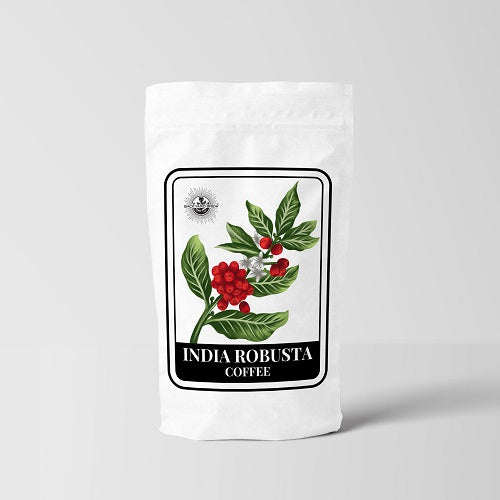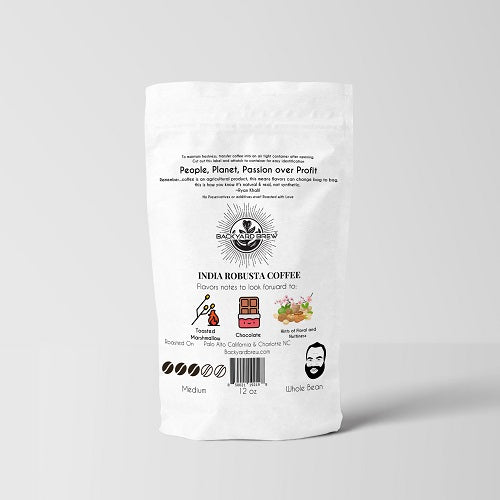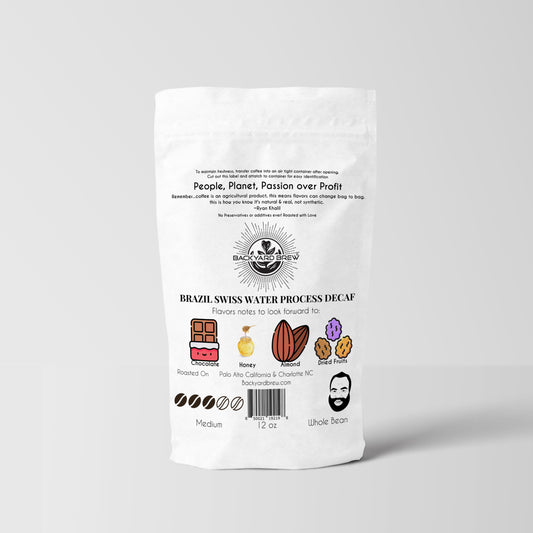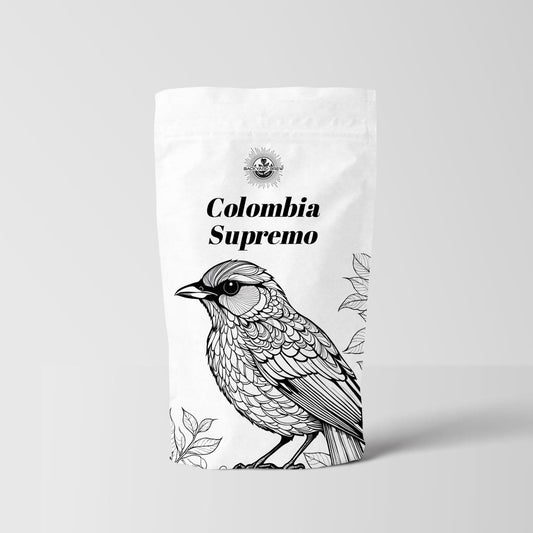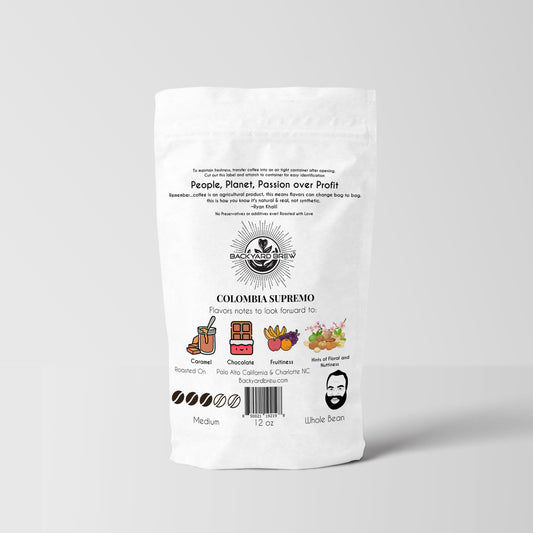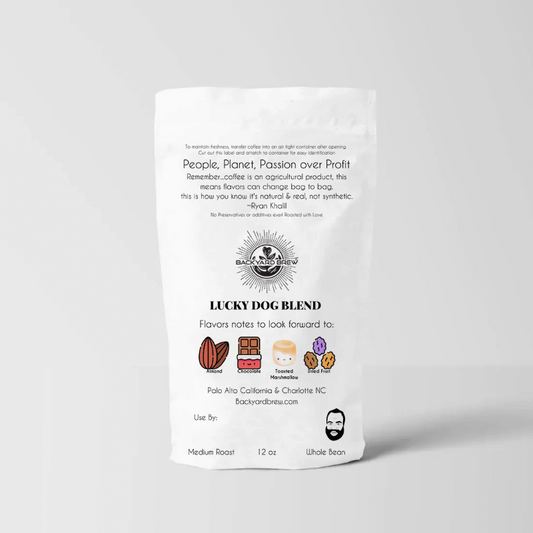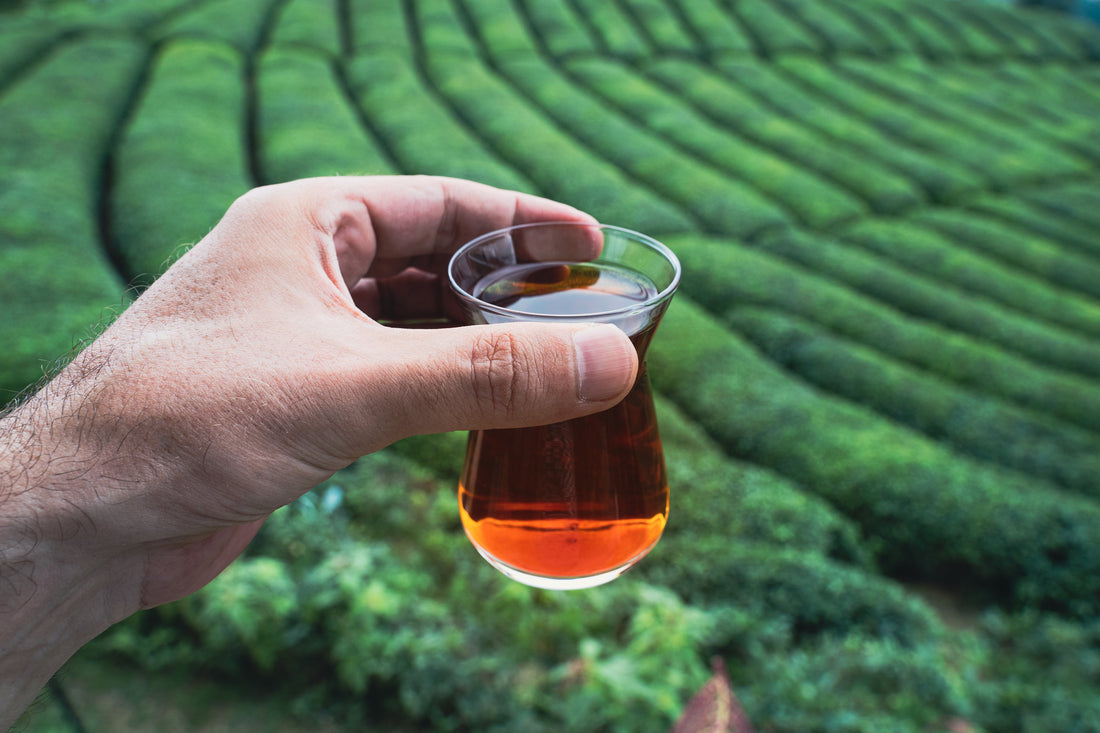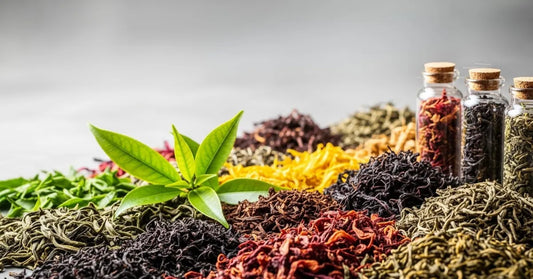Best Tea Growing Regions in the World - Where is your tea from?
Related Product
Subscribe
Table of Contents
Have you ever wondered where your favorite cup of tea comes from? While Asia can be the most guessed region, you will be surprised by the real answer. After all, tea has a rich history. Moreover, it is not something you can grow just anywhere. So, what makes some places the best for growing tea? Is it the special climate, the height of the land, or the traditional ways of farming? In this blog, we will take a closer look at the Best Tea Growing Regions in the World. We will explore what makes each region unique, the different types of tea leaves they produce, and how tea is grown. What’s more, we will also lightly talk about the importance of ethical sourcing of tea leaves. So, let’s get to it…
Ethical sourcing means that the tea is produced in a way that is good for the environment and fair to the farmers.
The Importance of Tea Growing Regions
You should know that the factors such as climate, soil, and altitude significantly influence the characteristics of the tea leaves. So, now we are going to talk about the Best Tea Growing Regions in the World, highlighting their unique features, the types of tea leaves they produce, and the importance of sustainable practices in tea cultivation.
|
Tea Growing Region |
Annual Production (Metric Tons) |
Types of Tea Leaves |
Sustainable Practices |
|
China |
2,500,000 |
Green Tea, Black Tea, Oolong Tea |
Ethical sourcing, sustainable farming practices |
|
India |
1,300,000 |
Black Tea, Green Tea, Oolong Tea |
Organic tea farming practices |
|
Sri Lanka |
300,000 |
Black Tea, Herbal Tea |
Fair Trade practices |
|
Japan |
80,000 |
Green Tea (Sencha, Matcha, Gyokuro) |
Ethical sourcing, sustainable farming practices |
|
Taiwan |
20,000 |
Oolong Tea (Tieguanyin, Alishan) |
Organic tea farming practices |
|
Kenya |
500,000 |
Black Tea, Green Tea, Herbal Tea |
Fair Trade practices |
|
Nepal |
20,000 |
Black Tea, Green Tea, Oolong Tea |
Ethical sourcing, sustainable farming practices |
|
Argentina |
10,000 |
Herbal Tea (Mate) |
Organic tea farming practices |
|
Turkey |
250,000 |
Black Tea |
Emerging fair trade practices |
|
South Africa |
15,000 |
Rooibos, Herbal Tea |
Organic tea farming practices |
1. China
China is often regarded as the birthplace of tea. It has a history that dates back over 5,000 years. The country is home to a diverse range of tea varieties, thanks to its varied climates and topographies. In 2021, China produced approximately 2.5 million metric tons of tea, making it the largest tea producer in the world, accounting for about 40% of global tea production.
Types of Tea Leaves in China
China is famous for several Types of Tea Leaves. For example, Longjing (Dragon Well) tea is a renowned green tea known for its delicate flavor and nutty aroma. Keemun black tea, on the other hand, is celebrated for its rich aroma and complex taste. Other notable varieties include Tieguanyin (Iron Goddess of Mercy) Oolong tea and Pu-erh tea, which is fermented and aged for unique flavors.
Ethical Sourcing of Tea Leaves
Many tea producers in China are increasingly focusing on ethical sourcing of tea leaves. This commitment to sustainable practices not only benefits the environment but also supports local communities. Clearly, it ensures fair wages and safe working conditions for farmers.
|
Year |
Production (Metric Tons) |
|---|---|
|
2015 |
2,200,000 |
|
2016 |
2,300,000 |
|
2017 |
2,400,000 |
|
2018 |
2,500,000 |
|
2019 |
2,600,000 |
|
2020 |
2,700,000 |
|
2021 |
2,800,000 |
|
2022 |
2,900,000 |
|
2023 |
3,000,000 |
|
2024 |
3,100,000 |
2. India
India is one of the largest tea producers globally, with a production of around 1.3 million metric tons in 2021. The country boasts several tea-growing regions, each with its unique flavor profiles. Assam, Darjeeling, and Nilgiri are the most famous tea regions in India, each contributing to the country's rich tea culture.
Types of Tea Leaves in India
Assam is known for its robust Black Tea, characterized by its strong flavor and dark color. Darjeeling tea, often referred to as the "Champagne of teas," is famous for its delicate and aromatic qualities. Nilgiri tea is known for its fragrant and brisk flavor, making it ideal for blending.
Organic Tea Farming Practices
In recent years, many Indian tea estates have adopted organic tea farming practices. This shift not only produces healthier tea but also protects the environment by reducing the use of harmful pesticides and fertilizers.
|
Year |
Production (Metric Tons) |
|---|---|
|
2015 |
1,200,000 |
|
2016 |
1,250,000 |
|
2017 |
1,300,000 |
|
2018 |
1,350,000 |
|
2019 |
1,400,000 |
|
2020 |
1,450,000 |
|
2021 |
1,500,000 |
|
2022 |
1,550,000 |
|
2023 |
1,600,000 |
|
2024 |
1,650,000 |
3. Sri Lanka
Sri Lanka, formerly known as Ceylon, is renowned for its high-quality tea. The country’s diverse climate and elevation create ideal conditions for tea cultivation. In 2021, Sri Lanka produced approximately 300,000 metric tons of tea, making it one of the top tea exporters in the world.
Types of Tea Leaves in Sri Lanka
Ceylon tea is known for its bright color and brisk flavor. It is available in various forms, including Black Tea and Herbal Tea. The country also produces unique flavored teas, such as cinnamon and ginger-infused varieties, which are gaining popularity among tea drinkers.
Fair Trade Tea Leaves
Many tea producers in Sri Lanka are committed to fair trade tea leaves. This ensures that farmers receive fair wages and work in safe conditions, contributing to the overall well-being of tea-growing communities.
|
Year |
Production (Metric Tons) |
|---|---|
|
2015 |
300,000 |
|
2016 |
320,000 |
|
2017 |
340,000 |
|
2018 |
360,000 |
|
2019 |
380,000 |
|
2020 |
400,000 |
|
2021 |
420,000 |
|
2022 |
440,000 |
|
2023 |
460,000 |
|
2024 |
480,000 |
4. Japan
Japan is famous for its green tea, with a production of around 80,000 metric tons in 2021. The country has a unique approach to tea cultivation, focusing on quality and tradition. The tea-growing regions of Uji, Shizuoka, and Kagoshima are particularly well-known for their exceptional teas.
Types of Tea Leaves in Japan
Japanese tea varieties include Sencha, Matcha, and Gyokuro. Sencha is the most popular green tea, while Matcha is known for its vibrant green color and health benefits. Gyokuro is a shade-grown tea that offers a rich umami flavor.
Ethical Sourcing of Tea Leaves
Japanese tea producers often emphasize Ethical Sourcing of Tea Leaves. They prioritize sustainable farming practices and support local communities, ensuring that tea production benefits everyone involved.
|
Year |
Production (Metric Tons) |
|---|---|
|
2015 |
100,000 |
|
2016 |
110,000 |
|
2017 |
120,000 |
|
2018 |
130,000 |
|
2019 |
140,000 |
|
2020 |
150,000 |
|
2021 |
160,000 |
|
2022 |
170,000 |
|
2023 |
180,000 |
|
2024 |
190,000 |
5. Taiwan
Taiwan is renowned for its Oolong tea, with a production of around 20,000 metric tons in 2021. The island's mountainous terrain and favorable climate create perfect conditions for growing this unique tea. The high altitudes and misty weather contribute to the complex flavors and aromas found in Taiwanese teas.
Types of Tea Leaves in Taiwan
Taiwan produces several high-quality Oolong teas, such as Tieguanyin and Alishan. Tieguanyin is known for its floral aroma and creamy texture, while Alishan Oolong is celebrated for its sweet, buttery flavor and smooth finish. These teas are often lightly oxidized, allowing their natural flavors to shine through.
Organic Tea Farming Practices
Many Taiwanese tea farmers are adopting organic tea farming practices. This approach helps maintain the quality of the tea while protecting the environment. By avoiding synthetic pesticides and fertilizers, these farmers ensure that their tea is not only delicious but also safe for consumers and the planet.
|
Year |
Production (Metric Tons) |
|---|---|
|
2015 |
20,000 |
|
2016 |
22,000 |
|
2017 |
24,000 |
|
2018 |
26,000 |
|
2019 |
28,000 |
|
2020 |
30,000 |
|
2021 |
32,000 |
|
2022 |
34,000 |
|
2023 |
36,000 |
|
2024 |
38,000 |
6. Kenya
Kenya is one of the fastest-growing tea producers in the world, with a production of approximately 500,000 metric tons in 2021. The country’s favorable climate, rich soil, and high altitudes contribute to its success in tea cultivation. The Kericho and Nandi Hills regions are particularly known for their tea estates.
Types of Tea Leaves in Kenya
Kenya primarily produces black tea, which is known for its strong flavor and bright color. Kenyan black tea is often used in blends and is popular for its robust taste. The country is also exploring the production of specialty teas, including green and herbal varieties, to meet the growing global demand.
Fair Trade Tea Leaves
Kenya has made significant strides in promoting Fair Trade Tea Leaves. Many tea estates are certified under Fair Trade standards, ensuring that farmers receive fair compensation and work in safe conditions. This commitment to ethical practices is helping to improve the livelihoods of many tea-growing communities.
|
Year |
Production (Metric Tons) |
|---|---|
|
2015 |
400,000 |
|
2016 |
420,000 |
|
2017 |
440,000 |
|
2018 |
460,000 |
|
2019 |
480,000 |
|
2020 |
500,000 |
|
2021 |
520,000 |
|
2022 |
540,000 |
|
2023 |
560,000 |
|
2024 |
580,000 |
7. Nepal
Nepal is often overlooked in the tea world, but it has a rich tea culture and produces some exceptional teas. The country’s high altitudes and diverse climates contribute to the unique flavors of its teas. In 2021, Nepal produced around 20,000 metric tons of tea, with a growing reputation for quality.
Types of Tea Leaves in Nepal
Nepal produces a variety of teas, including Black Tea, Green Tea, and Oolong Tea. The teas from the Ilam region are particularly noteworthy, known for their delicate flavors and floral notes. Nepalese teas often have a unique character, influenced by the region's altitude and climate.
Ethical Sourcing of Tea Leaves
Many tea producers in Nepal are committed to Ethical Sourcing of Tea Leaves. They focus on sustainable farming practices and support local communities, ensuring that tea production benefits everyone involved. This commitment helps to preserve the environment and improve the quality of life for farmers.
|
Year |
Production (Metric Tons) |
|---|---|
|
2015 |
15,000 |
|
2016 |
16,000 |
|
2017 |
17,000 |
|
2018 |
18,000 |
|
2019 |
19,000 |
|
2020 |
20,000 |
|
2021 |
20,000 |
|
2022 |
21,000 |
|
2023 |
22,000 |
|
2024 |
23,000 |
8. Argentina
Argentina may not be as well-known for tea as other countries, but it has a growing tea industry. The country’s climate is suitable for tea cultivation, particularly in the northern regions like Misiones and Corrientes. In 2021, Argentina produced around 10,000 metric tons of tea, primarily focusing on herbal varieties.
Types of Tea Leaves in Argentina
Argentina primarily produces Herbal Tea, especially mate, which is a traditional drink in the region. Mate is made from the leaves of the yerba mate plant and is known for its unique flavor and energizing properties. The country also produces other herbal teas, which are gaining popularity both locally and internationally.
Organic Tea Farming Practices
In Argentina, there is a growing interest in Organic Tea Farming Practices. Many producers are transitioning to organic methods to meet the increasing demand for healthier and more sustainable products. This shift not only benefits consumers but also promotes environmental sustainability.
|
Year |
Production (Metric Tons) |
|---|---|
|
2015 |
8,000 |
|
2016 |
9,000 |
|
2017 |
9,500 |
|
2018 |
10,000 |
|
2019 |
10,500 |
|
2020 |
10,000 |
|
2021 |
10,000 |
|
2022 |
10,500 |
|
2023 |
11,000 |
|
2024 |
11,500 |
9. Turkey
Turkey is one of the largest consumers of tea in the world, with a thriving tea industry. The Rize region, located along the Black Sea, is the heart of Turkish tea production. In 2021, Turkey produced approximately 250,000 metric tons of tea, primarily focusing on black tea.
Types of Tea Leaves in Turkey
Turkish tea is primarily Black Tea, known for its strong flavor and dark color. It is often served in small tulip-shaped glasses and is a staple in Turkish culture. The tea is typically brewed strong and enjoyed throughout the day, often accompanied by sweets or pastries.
Ethical Sourcing of Tea Leaves
While Turkey has made progress in tea production, there is still work to be done regarding Ethical Sourcing of Tea Leaves. Some producers are beginning to adopt fair trade practices to ensure better conditions for workers. This includes providing fair wages, safe working environments, and support for local communities. As awareness grows, more Turkish tea producers are focusing on sustainable practices that benefit both the environment and the farmers.
|
Year |
Production (Metric Tons) |
|---|---|
|
2015 |
200,000 |
|
2016 |
210,000 |
|
2017 |
220,000 |
|
2018 |
230,000 |
|
2019 |
240,000 |
|
2020 |
250,000 |
|
2021 |
250,000 |
|
2022 |
260,000 |
|
2023 |
270,000 |
|
2024 |
280,000 |
10. South Africa
South Africa is famous for its unique herbal tea, Rooibos. This caffeine-free tea is made from the leaves of the Aspalathus linearis plant and is gaining popularity worldwide. In 2021, South Africa produced around 15,000 metric tons of Rooibos tea, primarily in the Cederberg region, which has the ideal climate for growing this plant.
Types of Tea Leaves in South Africa
Rooibos is the most well-known tea from South Africa, but the country also produces other herbal teas. Rooibos is rich in antioxidants and has a naturally sweet flavor, making it a favorite among tea drinkers. Additionally, South Africa is exploring other herbal infusions, such as honeybush tea, which offers a similar flavor profile.
Organic Tea Farming Practices
Many South African tea producers are committed to organic tea farming practices. This approach helps to maintain the quality of rooibos while promoting environmental sustainability. By using organic methods, farmers can ensure that their products are free from harmful chemicals, appealing to health-conscious consumers.
|
Year |
Production (Metric Tons) |
|---|---|
|
2015 |
12,000 |
|
2016 |
13,000 |
|
2017 |
14,000 |
|
2018 |
14,500 |
|
2019 |
15,000 |
|
2020 |
15,000 |
|
2021 |
15,000 |
|
2022 |
15,500 |
|
2023 |
16,000 |
|
2024 |
16,500 |
Future of these Best Tea Growing Regions in the World
As the global demand for tea continues to rise, the future of the best tea-growing regions is poised for significant changes. Here, we explore the potential developments and challenges that these regions may face.
1. Climate Change and Its Impact
Climate change poses a significant threat to tea cultivation. Rising temperatures, altered rainfall patterns, and increased frequency of extreme weather events can affect the growth and quality of tea plants. For instance, regions like Assam in India and the Nilgiri hills may experience shifts in their traditional growing seasons, impacting harvest yields.
To combat these challenges, tea-growing regions are adopting various adaptation strategies. This includes developing climate-resilient tea varieties that can withstand higher temperatures and drought conditions. Research institutions and agricultural universities are working on breeding programs to create hybrids that maintain quality while being more resilient to climate stressors.
2. Sustainable Practices and Ethical Sourcing
Consumers are increasingly seeking sustainably sourced products, including tea. This trend is pushing tea producers to adopt more environmentally friendly practices. Regions like Sri Lanka and Kenya are leading the way in implementing Fair Trade and Organic Tea Farming Practices. The future will likely see more tea estates obtaining certifications that guarantee ethical sourcing and sustainable farming.
Advancements in technology are also playing a role in promoting sustainable practices. Precision agriculture, which uses data analytics and technology to optimize farming practices, is becoming more common. This approach allows farmers to monitor soil health, water usage, and pest management more effectively, leading to better yields and reduced environmental impact.
3. Market Trends and Consumer Preferences
The global tea market is witnessing a shift towards specialty teas, including premium and artisanal varieties. Consumers are increasingly interested in unique flavors and health benefits, driving demand for high-quality teas from regions like Japan and Taiwan. This trend encourages tea producers to focus on quality over quantity, leading to the cultivation of more niche varieties.
The growing awareness of health and wellness is influencing tea consumption patterns. Teas rich in antioxidants, such as green tea and herbal infusions, are gaining popularity. As a result, regions known for these types of tea, like China and Japan, may see increased investment in marketing and production to cater to health-conscious consumers.
4. Technological Advancements
The integration of technology in tea farming is set to revolutionize the industry. Smart farming techniques, including the use of drones for monitoring crops and automated irrigation systems, can enhance productivity and reduce labor costs. These innovations will allow tea producers to respond more quickly to changing conditions and optimize their operations.
The rise in e-commerce is changing how tea is marketed and sold. Producers can now reach consumers directly through online platforms, bypassing traditional distribution channels. This shift allows tea growers to build their brands and connect with consumers who value transparency and quality. Regions like Nepal and Argentina, which are less known in the global market, can leverage this trend to promote their unique offerings.
5. Challenges Ahead
Many tea-growing regions face labor shortages, particularly as younger generations move to urban areas for better opportunities. This trend poses a challenge for maintaining traditional tea cultivation practices. To address this, regions may need to invest in training programs and incentives to attract and retain workers in the tea industry.
Economic pressures, including fluctuating prices and competition from other beverage markets, can impact the profitability of tea production. Regions must adapt to these challenges by diversifying their product offerings and exploring new markets. For instance, incorporating value-added products like flavored teas or tea-based beverages can help increase revenue.
|
Tea Growing Region |
Annual Production (Metric Tons) |
Market Growth Rate |
Key Trends |
Challenges |
|
China |
2015: 2,200,000; 2024: 3,100,000 |
3% (estimated) |
Increasing demand for premium and specialty teas |
Climate change, labor issues |
|
India |
2015: 1,200,000; 2024: 1,650,000 |
2% (estimated) |
Growth in organic and specialty teas |
Labor shortages, climate change impacts |
|
Sri Lanka |
2015: 300,000; 2024: 480,000 |
4% (estimated) |
Rising demand for Fair Trade and organic teas |
Market competition, climate variability |
|
Japan |
2015: 100,000; 2024: 190,000 |
5% (estimated) |
Focus on health benefits of green tea |
Aging population, competition from other beverages |
|
Taiwan |
2015: 20,000; 2024: 38,000 |
6% (estimated) |
Growing reputation for high-quality Oolong teas |
Limited production scale, climate challenges |
|
Kenya |
2015: 400,000; 2024: 580,000 |
5% (estimated) |
Expansion into specialty teas and herbal varieties |
Price fluctuations, labor conditions |
|
Nepal |
2015: 15,000; 2024: 23,000 |
5% (estimated) |
Focus on specialty teas and sustainable practices |
Limited global recognition, climate change |
|
Argentina |
2015: 8,000; 2024: 11,500 |
3% (estimated) |
Growing demand for organic herbal teas |
Competition from other beverages |
|
Turkey |
2015: 200,000; 2024: 280,000 |
3% (estimated) |
Rising interest in specialty teas |
Labor conditions and fair trade practices |
|
South Africa |
2015: 12,000; 2024: 16,500 |
4% (estimated) |
Increasing demand for Rooibos and caffeine-free options |
Market awareness and competition |
Conclusion
Now that you are familiar with the best tea-growing regions in the world, you can appreciate the unique characteristics and market insights that each area brings to the global tea industry. Understanding these regions not only enhances your tea experience but also highlights the importance of ethical sourcing and sustainability in tea production.
And remember that the best selections can be found at Backyard Brew. Whether you’re looking for premium green teas, robust black teas, or unique herbal blends, Backyard Brew has something to satisfy every palate. Discover your next favorite brew and support sustainable tea practices today!

